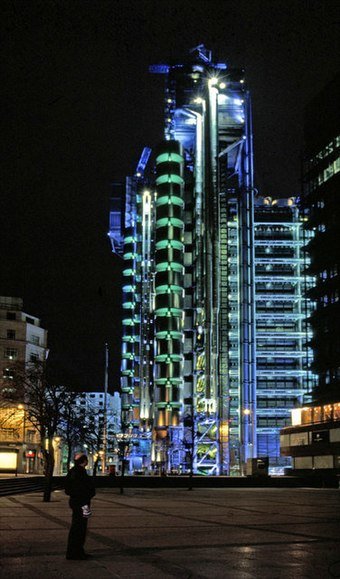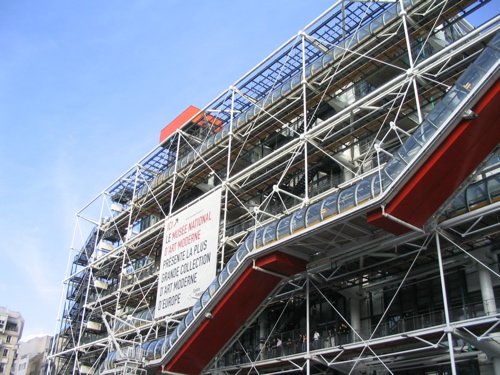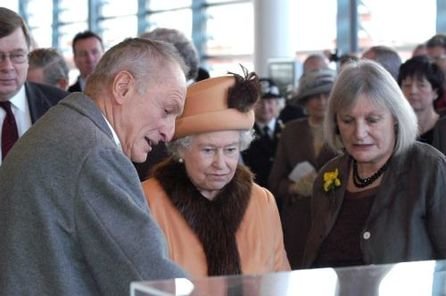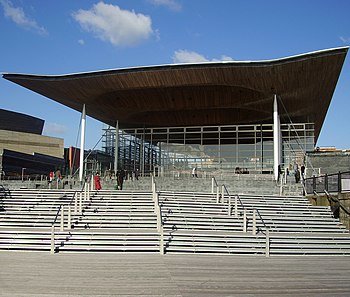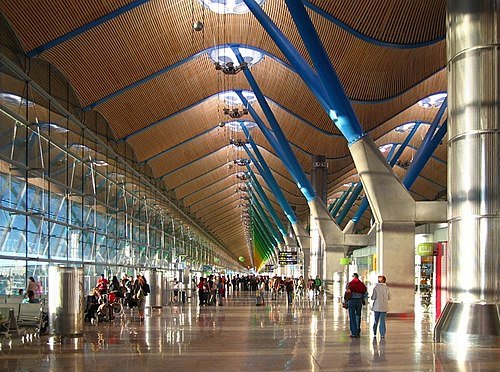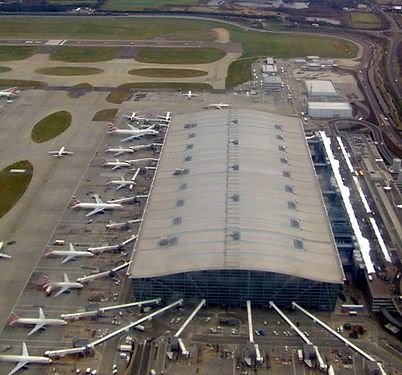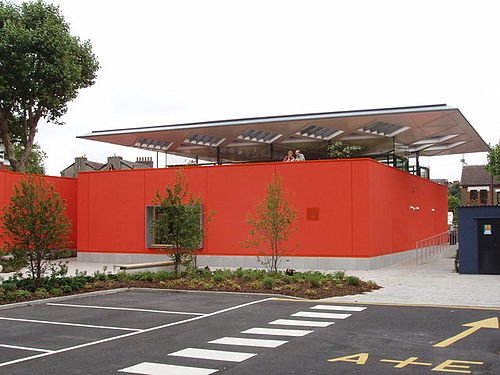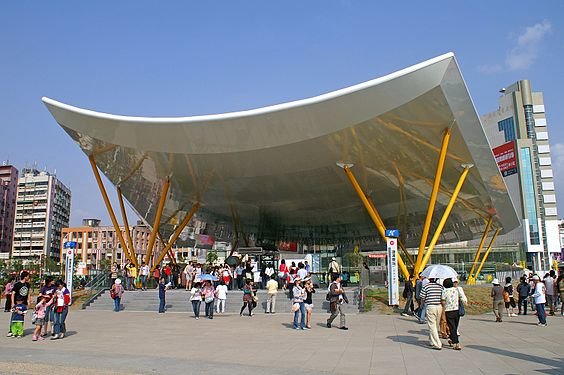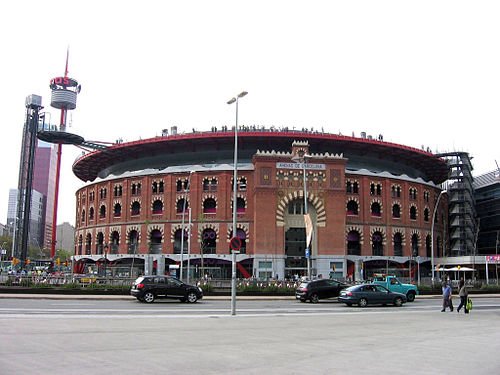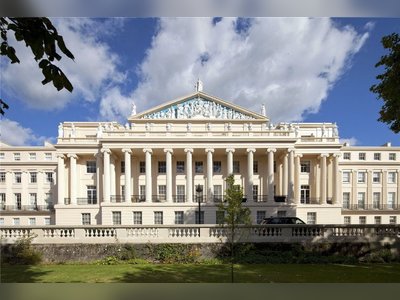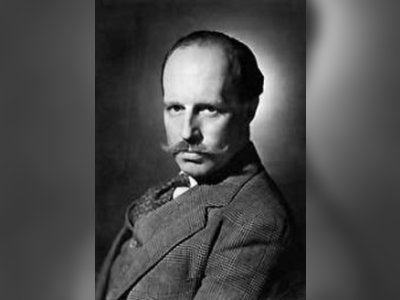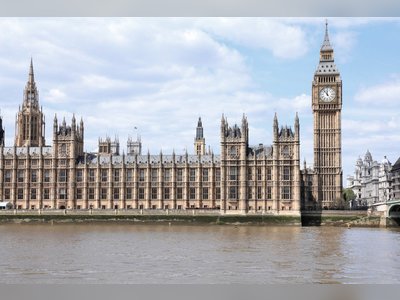British Heritage
Remember, Cherish, Learn.
beta
Richard Rogers
A Pioneer of British Modernist Architecture.
Richard George Rogers, Baron Rogers of Riverside, born 23 July 1933 and passing on 18 December 2021, was an Italian-born British architect renowned for his modernist and functionalist designs in high-tech architecture. His innovative style and dedication to social responsibility in architectural design have left an indelible mark on British heritage. His career spanned over six decades, during which he not only crafted some of the most iconic structures of the 20th and 21st centuries but also became a champion for urban reform and environmental sustainability.
Rogers was born in Florence, Tuscany, in an Anglo-Italian family with a rich architectural heritage. His Jewish ancestors moved from Sunderland to Venice in about 1800, later settling in Trieste, Milan and Florence. His father, William Nino Rogers, was a cousin of the prominent Italian Jewish architect Ernesto Nathan Rogers.
With the rising tide of fascism and anti-Jewish laws in Italy under Mussolini, the Rogers family moved to England in 1938. Despite early academic struggles and a dyslexia diagnosis, Rogers found his passion in architecture. After finishing a foundation course at Epsom School of Art and fulfilling his National Service duties, Rogers enrolled at the Architectural Association School of Architecture in London, where he completed his Diploma. His academic journey led him to Yale School of Architecture in the United States, where he graduated with a master's degree in 1962.
Rogers' early career saw him joining forces with fellow Yale alumni Norman Foster and Su Brumwell, alongside Wendy Cheesman, to establish the architectural practice Team 4. During this time, Rogers and Foster developed what would later be coined as 'high-tech architecture', characterised by a strong emphasis on the display of the structural and mechanical systems of buildings.
While Team 4 dissolved in 1967, Rogers continued to work with Su Rogers and also partnered with architects like John Young and Laurie Abbott. His designs from this period, such as the glass cube house and studio for Humphrey Spender, reflected his growing interest in prefabrication and structural simplicity.
His architectural language further evolved when he teamed up with Italian architect Renzo Piano. Their collaboration resulted in a victorious design competition for the Pompidou Centre in Paris, in July 1971, which projected Rogers into international architectural fame.
In 1977, Rogers established the Richard Rogers Partnership, later known as Rogers Stirk Harbour + Partners, an international architectural firm with offices in London, Shanghai, and Sydney. Beyond his architectural work, Rogers became increasingly involved in urban planning and sustainability.
His contributions to these broader topics found expression in a series of five talks, titled "Sustainable City," for the BBC's annual Reith Lectures in 1995. These lectures were later published in his book "Cities for a Small Planet." Rogers also headed the Urban Task Force, established by the British government in 1998 to identify the root causes of urban decline and propose solutions.
Some of his most iconic works, such as the Millennium Dome in London and Terminal 3 of the new World Trade Center in New York, were completed during this period. Yet, his designs, marked by functionalist and modernist aesthetics, often sparked controversy and debate, as seen in the case of the Lloyd's building.
Throughout his career, Rogers faced criticisms regarding the functionality and maintenance of his designs. Yet, his pioneering spirit, combined with his advocacy for urban reform and environmental sustainability, had a significant impact on the architectural landscape and urban fabric of British cities and beyond.
Beyond his professional life, Rogers was known for his distinctive personal style, which led him to be named one of the "50 best-dressed British men" by GQ magazine in 2015. He was married to Ruth Rogers, a chef and owner of The River Café restaurant in London, and was a father of five.
Rogers' career was decorated with numerous awards and recognitions. He was knighted by Queen Elizabeth II in 1991 and was awarded the RIBA Royal Gold Medal in 1985, among other accolades. In 2007, he was recognised with the Pritzker Architecture Prize, the highest honour in the field.
Richard Rogers was not only an architect but also a thought leader, whose ideas shaped both the British landscape and global conversations around urban planning and sustainability. His high-tech architectural style, marked by the expressive display of structural elements, has had a lasting influence on the field.
Despite facing criticisms, his designs have remained some of the most iconic structures in the world. The Lloyd's Building, the Millennium Dome, and Terminal 5 at Heathrow Airport are but a few examples of his architectural legacy. His unique style and vision are emblematic of a period of intense innovation and have firmly established him as a pivotal figure in British modernist architecture.
In addition to his architectural contributions, Rogers also played an instrumental role in shaping urban policies and advocating for more sustainable, vibrant, and equitable cities. His work with the Urban Task Force and his Reith Lectures have contributed to evolving conversations about the role of architecture in creating sustainable and inclusive urban environments.
In conclusion, Richard Rogers was a transformative figure in architecture. His buildings, writings, and leadership have left an indelible mark on British heritage, embodying a spirit of innovation, social responsibility, and the pursuit of aesthetic and functional harmony. His legacy continues to inspire future generations of architects and urban planners.
A British Architect of Italian Descent
Rogers was born in Florence, Tuscany, in an Anglo-Italian family with a rich architectural heritage. His Jewish ancestors moved from Sunderland to Venice in about 1800, later settling in Trieste, Milan and Florence. His father, William Nino Rogers, was a cousin of the prominent Italian Jewish architect Ernesto Nathan Rogers.
With the rising tide of fascism and anti-Jewish laws in Italy under Mussolini, the Rogers family moved to England in 1938. Despite early academic struggles and a dyslexia diagnosis, Rogers found his passion in architecture. After finishing a foundation course at Epsom School of Art and fulfilling his National Service duties, Rogers enrolled at the Architectural Association School of Architecture in London, where he completed his Diploma. His academic journey led him to Yale School of Architecture in the United States, where he graduated with a master's degree in 1962.
Early Career and Development of High-Tech Architecture
Rogers' early career saw him joining forces with fellow Yale alumni Norman Foster and Su Brumwell, alongside Wendy Cheesman, to establish the architectural practice Team 4. During this time, Rogers and Foster developed what would later be coined as 'high-tech architecture', characterised by a strong emphasis on the display of the structural and mechanical systems of buildings.
While Team 4 dissolved in 1967, Rogers continued to work with Su Rogers and also partnered with architects like John Young and Laurie Abbott. His designs from this period, such as the glass cube house and studio for Humphrey Spender, reflected his growing interest in prefabrication and structural simplicity.
His architectural language further evolved when he teamed up with Italian architect Renzo Piano. Their collaboration resulted in a victorious design competition for the Pompidou Centre in Paris, in July 1971, which projected Rogers into international architectural fame.
Later Career and Contribution to British Heritage
In 1977, Rogers established the Richard Rogers Partnership, later known as Rogers Stirk Harbour + Partners, an international architectural firm with offices in London, Shanghai, and Sydney. Beyond his architectural work, Rogers became increasingly involved in urban planning and sustainability.
His contributions to these broader topics found expression in a series of five talks, titled "Sustainable City," for the BBC's annual Reith Lectures in 1995. These lectures were later published in his book "Cities for a Small Planet." Rogers also headed the Urban Task Force, established by the British government in 1998 to identify the root causes of urban decline and propose solutions.
Some of his most iconic works, such as the Millennium Dome in London and Terminal 3 of the new World Trade Center in New York, were completed during this period. Yet, his designs, marked by functionalist and modernist aesthetics, often sparked controversy and debate, as seen in the case of the Lloyd's building.
Throughout his career, Rogers faced criticisms regarding the functionality and maintenance of his designs. Yet, his pioneering spirit, combined with his advocacy for urban reform and environmental sustainability, had a significant impact on the architectural landscape and urban fabric of British cities and beyond.
Personal Life and Honours
Beyond his professional life, Rogers was known for his distinctive personal style, which led him to be named one of the "50 best-dressed British men" by GQ magazine in 2015. He was married to Ruth Rogers, a chef and owner of The River Café restaurant in London, and was a father of five.
Rogers' career was decorated with numerous awards and recognitions. He was knighted by Queen Elizabeth II in 1991 and was awarded the RIBA Royal Gold Medal in 1985, among other accolades. In 2007, he was recognised with the Pritzker Architecture Prize, the highest honour in the field.
Legacy and Impact on British Heritage
Richard Rogers was not only an architect but also a thought leader, whose ideas shaped both the British landscape and global conversations around urban planning and sustainability. His high-tech architectural style, marked by the expressive display of structural elements, has had a lasting influence on the field.
Despite facing criticisms, his designs have remained some of the most iconic structures in the world. The Lloyd's Building, the Millennium Dome, and Terminal 5 at Heathrow Airport are but a few examples of his architectural legacy. His unique style and vision are emblematic of a period of intense innovation and have firmly established him as a pivotal figure in British modernist architecture.
In addition to his architectural contributions, Rogers also played an instrumental role in shaping urban policies and advocating for more sustainable, vibrant, and equitable cities. His work with the Urban Task Force and his Reith Lectures have contributed to evolving conversations about the role of architecture in creating sustainable and inclusive urban environments.
In conclusion, Richard Rogers was a transformative figure in architecture. His buildings, writings, and leadership have left an indelible mark on British heritage, embodying a spirit of innovation, social responsibility, and the pursuit of aesthetic and functional harmony. His legacy continues to inspire future generations of architects and urban planners.
- Richard Rogersen.wikipedia.org

